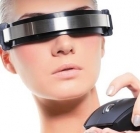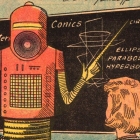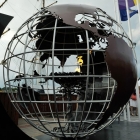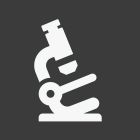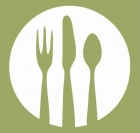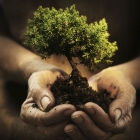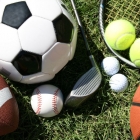-
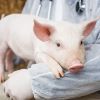 +17 +1
+17 +1Scientists Achieve Breakthrough on Path to Pig-to-Human Heart Transplants
Although 54 percent of adults in the United States have registered as organ donors, just one in three people die in a way that allows for organ donation. That leaves more than 100,000 people in the United States waiting for a transplant. Many will die waiting. Because demand for organs outpaces supply and probably always will, researchers have looked to xenotransplantation — placing animal organs into human bodies — as an alternative.
-
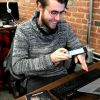 +21 +1
+21 +1How I Spent a Year Locked Out of My Own Hand
It was just before midnight when I made the impulsive decision that would transform me into the world’s most useless cyborg. My friend and I had just left a free concert at the 25th annual Def Con, the world’s largest hacker conference, and were roaming the halls of the Las Vegas Caesars Hotel trying to decide what to do with the rest of our night. Then I received the fateful text message from a friend: “Biohacking village shutting down for the night, there’s a few more implants left.”
-
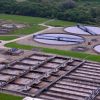 +8 +1
+8 +1Purple bacteria can turn human waste into clean hydrogen energy
The new method reduces carbon emissions and turns wastewater treatment plants into green generators. A significant downside to wastewater treatment plants is their carbon footprint. Now, researchers have found a way to reduce carbon emissions from sewage and produce hydrogen energy at the same time. Their method uses purple bacteria and electrical currents to capitalize on the organic materials we flush down the toilet every day. We spoke with one of the study’s authors, Daniel Puyol of Spain’s King Juan Carlos University, to learn more.
-
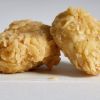 +10 +1
+10 +1Chicken nuggets lab-grown from feathers to go on sale by end of year, company says
Imagine if instead of raising a whole chicken for slaughter, it was possible to pop a feather in a machine, and grow a chicken nugget. That's basically what a San Francisco-based company says it has figured out how to do. It claims the process - from feather to nugget - takes about two days.
-
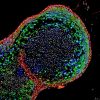 +11 +1
+11 +1Scientists grow human esophagus in lab
Scientists at the Cincinnati Children’s Center for Stem Cell and Organoid Medicine (CuSTOM) are working to create the entire human gastrointestinal system in a laboratory now report using pluripotent stem cells to grow human esophageal organoids. This study could offer new ways to study birth defects and diseases that affect millions of people with gastrointestinal disorders, such as gastric reflux, cancer, etc.
-
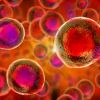 +11 +1
+11 +1Adult Stem Cells Anti-Aging Potential
During the early 2000s the stem cell industry took some heavy hits when using using embryonic stem cells was challenged, leaving all but a few lines of those cells excluded from federal research grants.
-
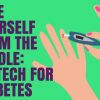 -1 +1
-1 +1Free yourself from the needle: Biotech for diabetes - Jsb Conference
Even though the world is plagued with emerging diseases, there are a number of illnesses that have been known for quite a while, and yet, their contribution to the death toll is higher than their peers. The field of medicine is still struggling to provide a cure to these. One such disease is diabetes. Diabetes … Continue reading Free yourself from the needle: Biotech for diabetes
-
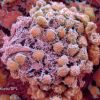 +8 +1
+8 +1Hybrid human–chicken embryos illuminate key developmental milestone
A new technique reveals the earliest stages of human development without the need for human embryos.
-
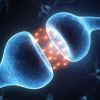 +19 +1
+19 +1Cannabidiol significantly reduces seizures in patients with severe form of epilepsy
Cannabidiol (CBD), a compound derived from the cannabis plant that does not produce a “high” and has been an increasing focus of medical research, was shown in a new large-scale, randomized, controlled trial to significantly reduce the number of dangerous seizures in patients with a severe form of epilepsy called Lennox-Gastaut syndrome.
-
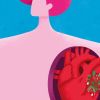 +17 +1
+17 +1Self-repairing organs could save your life in a heartbeat
What becomes of the broken-hearted? In cardiac medicine, the answer is usually brutally straightforward: they die. Heart disease is the leading cause of death worldwide and there is often precious little we can do about it. Pacemakers bring some relief and transplants work, but there are nowhere near enough donated hearts to go around. And unlike skin and liver cells, heart muscle cells can’t remake themselves. Once they get damaged or die, they are gone forever.
-
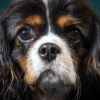 +20 +1
+20 +1A stealthy Harvard startup wants to reverse aging in dogs, and humans could be next
The world’s most influential synthetic biologist is behind a new company that plans to rejuvenate dogs using gene therapy. If it works, he plans to try the same approach in people, and he might be one of the first volunteers. The stealth startup Rejuvenate Bio, cofounded by George Church of Harvard Medical School, thinks dogs aren’t just man’s best friend but also the best way to bring age-defeating treatments to market.
-
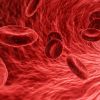 +3 +1
+3 +1A transplant of CRISPR-edited liver cells could replace lifelong injections for hemophilia B patients
A Salk Institute team transplanted liver cells into mouse models of hemophilia B, finding that the treatment restored their ability to form blood clots for a year. The hope is that this one-and-done treatment could replace the frequent injections of clotting factors that are currently used to treat the inherited blood disorder.
-
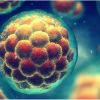 +2 +1
+2 +1Fasting boosts stem cells’ regenerative capacity
Age-related loss of stem cell function can be reversed by a 24-hour fast, according to a new study from MIT biologists.
-
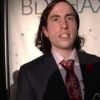 +6 +1
+6 +1Biohacker famous for injecting self with herpes treatment found dead in float therapy tank
The 28-year-old CEO of a controversial biohacking company was found dead in a Washington D.C. spa on Sunday. The body of Aaron Traywick, CEO and founder of Ascendance Biomedical, was discovered in a spa room on Massachusetts Ave. shortly after 11:30 a.m. Sunday, the Metropolitan Police Department told SFGATE. The investigation remains ongoing. No evidence suggests foul play.
-
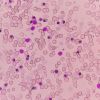 +10 +1
+10 +1A Stunning Gene-Therapy Cure for Beta Thalassemia, One of the World’s Most Devastating Blood Diseases
In 1976, my final year of medical school, I travelled abroad and spent several months working in the hematology clinic at Hadassah Hospital, in Jerusalem. Every day, I attended to children and teen-agers suffering from a blood disorder called beta thalassemia. They were easy to identify in the clinic waiting room. Their skin was a pale yellow, their skull and facial bones were distorted, and their abdomens bulged from an enlarged liver and spleen. Many were short of breath, with swollen legs and other signs of heart failure.
-
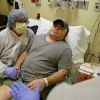 +18 +1
+18 +1Humans to be genetically-modified in Europe for the first time this year using gene-splicing therapy
Europe will see its first genetically engineered patients using a groundbreaking gene-splicing therapy this year after regulators approved trials. The biotech company Crispr Therapeutics is hoping to cure the disease beta thalassaemia, a devastating blood disorder which reduces the production of haemoglobin, the protein which carries oxygen to cells. Without sufficient oxygen, sufferers can be left with bone deformities, severe anaemia, slow growth, fatigue and shortness of breath.
-
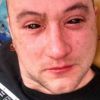 +26 +1
+26 +1Bio-Hackers Figured Out How to Inject Human Eyes With Night Vision, And It's Still Creepy as Hell
Back in 2015, a team of biochemical researchers in the US figured out how to give a human volunteer night vision, allowing him to see across a distance of over 50 metres in total darkness for several hours.
-
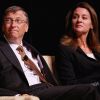 +3 +1
+3 +1Bill and Melinda Gates think a weaponized disease may be the biggest threat to humanity — here's how worried you should be
One of the biggest threats out there is still one of the oldest: infectious disease, either natural or human-made.
-
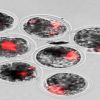 +37 +1
+37 +1World's first human-sheep hybrids pave way for diabetes cure and mass organ transplants
Human-sheep hybrids have been created by scientists for the first time, opening the door to organs being grown inside the farmyard animals for use in transplants or to cure diabetes.
-
 +11 +1
+11 +1China’s great leap forward in science
I first met Xiaogang Peng in the summer of 1992 at Jilin University in Changchun, in the remote north-east of China, where he was a postgraduate student in the department of chemistry. He told me that his dream was to get a place at a top American lab. Now, Xiaogang was evidently smart and hard-working – but so, as far as I could see, were most Chinese science students. I wished him well, but couldn’t help thinking he’d set himself a massive challenge.
Submit a link
Start a discussion

